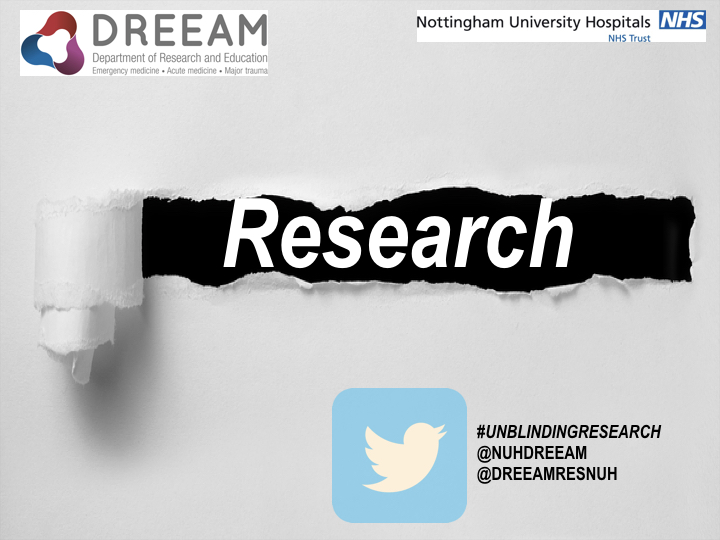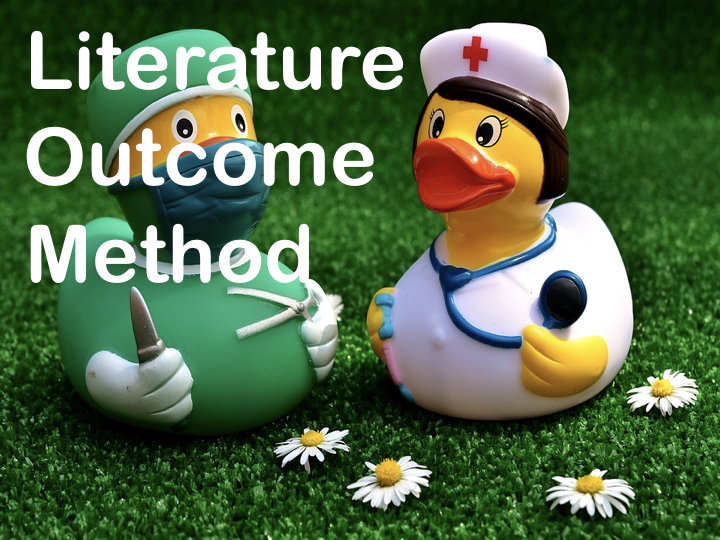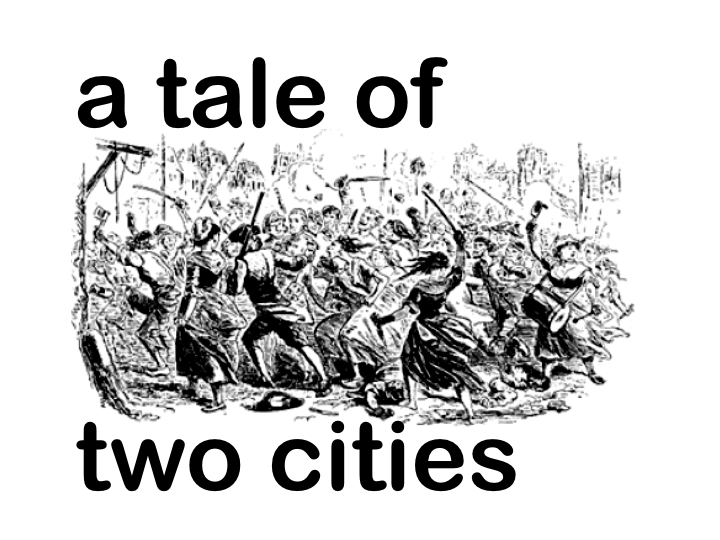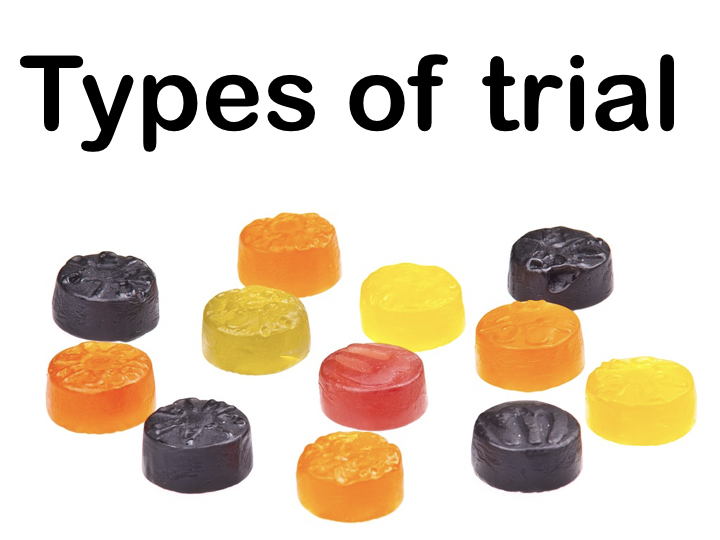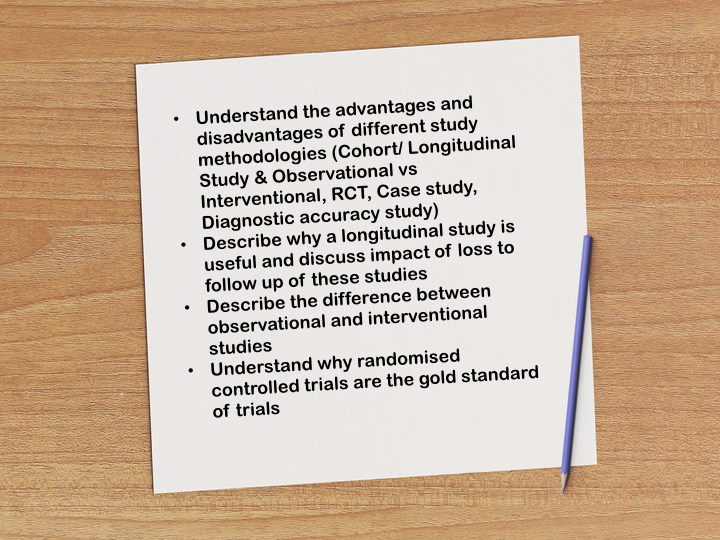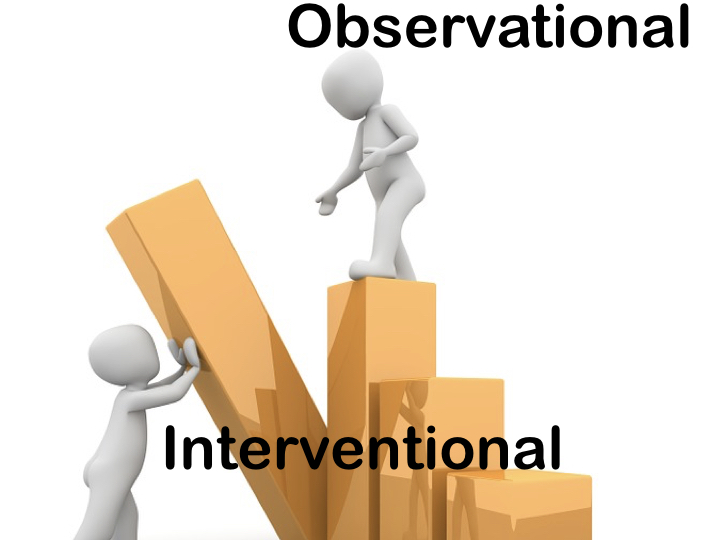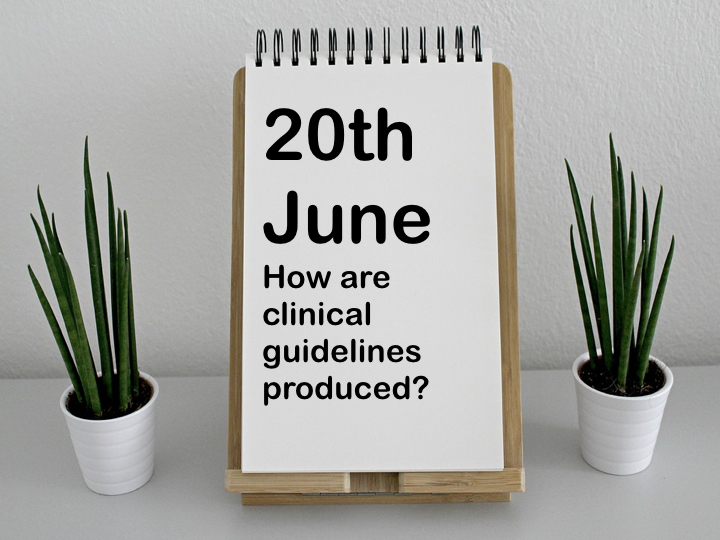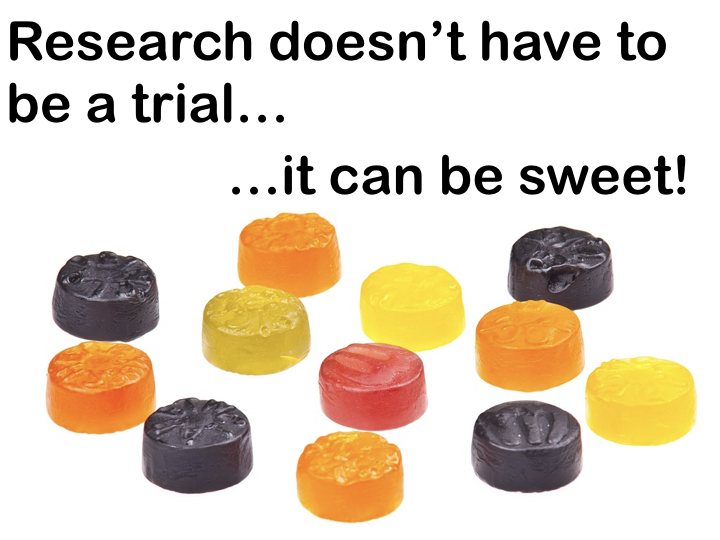Session Four: Types of trial
This episode is a live recording of the fourth session of #UnblindingResearch held in DREEAM 16th May 2018. The group work has been removed for the sake of brevity.
This session of #UnblindingResearch looks at the different types of research trial and how our outcome decides the type of trial used. Here are the slides for this session (p cubed of course), you can move between slides by clicking on the side of the picture or using the arrow keys.
The session began looking back on our previous sessions, first the introduction to the research method, then how we formulate a research question using PICO (Research, THE search, WE search) as well as get funding and then the last session covering the 'tale of two cities' of good clinical practice and ethics (the only way is ethics).
This session looked to prove that research doesn't have to be a trial, it can be sweet! There was lots of group work based on scenarios with research nurses and sweets* to explore the different types of trial:
Research nurses like sweets. You want to see the impact of eating sweets on the dental health of new research nurses. (LONGITUDINAL)
Longitudinal trials are an observational method with data collected over time. They can be retrospective or prospective. This obviously takes time and you can imagine nurses leaving the department or taking time off for illness/pregnancy and so being lost to follow up. This is a large problem for longitudinal studies.
You want to investigate the dental health of nurses across different departments within the trust and the factors behind it. (COHORT)
Cohort studies are a particular type of longitudinal study. A cohort is a group of people who share a particular characteristic. They observe large groups of individuals, recording their exposure to certain risk factors to find clues as to possible causes of disease. They can be retrospective or prospective.
You believe that changing research nurses’ snacks to fruit rather than their usual sweets will improve their dental health. (INTERVENTIONAL)
Observational studies have no controls over variables they simply observe. Interventional studies change one variable and compare or use a control.
You want to know about the snack choices of research nurses in a department and what influences them. (CASE STUDY)
Case studies are very deep in analysis but narrow in breadth. They involve a very close and detailed analysis of a particular concept such as the decision making of a small number of individuals. It is not the same as a case report.
Professor Haribo has published a new diagnostic test to tell nurses how likely they are to get obese from eating sweets. It is believed that it could predict if a nurse should eat sweets by scoring if a nurse will get obese or if they won’t. Traditionally we have used diet plans to predict obesity from eating sweets. You want to investigate the new test. (DIAGNOSTIC ACCURACY TEST)
Diagnostic accuracy tests are all about how a test correctly identifies or rules out a particular disease and how this can inform subsequent decisions. A test needs to correctly identify a disease in those who have it (true positive) which is its sensitivity and correctly rule it out in those who don't have it (true negative) which is its specificity. If we are evaluating a new test this is known as the index test and it is compared against the reference standard. The D Dimer in PE is a classic example of a test with high sensitivity but low specificity and how we need to know this during clinical decision making. Here is a good article from the BMJ on diagnostic accuracy studies. We will look more at sensitivity and specificity in future sessions.
You have a theory that Tesco own brand wine gums will improve research nurse productivity compared to Maynard wine gums. You know that research nurses like Maynard’s wine gums** and so want to design a study to get over this bias. (RANDOMISED CONTROL TRIAL)
RCTs are the gold standard of research trial. It is designed through random allocation of participants to receive the new treatment or to receive standard treatment/placebo to overcome inherent biases. We discussed ways of randomising and blinding and the limitations of this.
For instance it would be easy to be blinded about these two syringes as to which one contains the real medicine and which one contains the placebo as they look the same and can be delivered without the doctor or nurse knowing which is which:
However as with our sweets if there is a difference in appearance, smells or taste however then true blinding is much more difficult and we may need unblinded research staff.
*These scenarios were written by Lucy Ryan the DREEAM Research team manager and she openly admits to loving sweets
** We at DREEAM have nothing against non-Maynard wine gums we just prefer those from Maynard. We have no financial involvement in Maynard but would be willing to listen to any offer of free sweets
